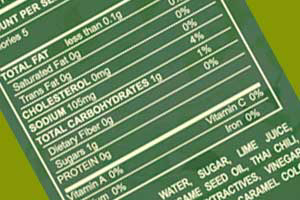Thailand proposes to change food labelling law

The Thai Food and Drug Administration has notified the World Trade Organisation (WTO) of the proposed new food labelling requirements for pre-packaged food that will replace the current requirements.
Once this food labelling proposal becomes effective, it will replace the current food labelling notification, Ministry of Public Health Notification No. 194, which has been in place since 2000.
Proposed changes in the food labelling law include:
1. Notification name change “Pre-packaged Food Labelling” to be in line with CODEX’s general standard for labelling of pre-packaged foods.
2. Definitions of “pre-packaged food,” expiry date (use by date), best before, food serial number, repacking, and allergen.
3. The proposed food labelling criteria requires all pre-packaged food to have food labelling except:
- Food that is prepared and sold directly to the consumer (e.g. hot dog vendor or food kiosk);
- Fresh food or fresh food, which has been peeled, cut, trimmed or processed by any other means to reduce its size and keep chilled in the clear package. This does not include processed foods in instant ready-to-sell packaging pursuant to the Notification of the Ministry of Public Health regarding Production Method and Equipment and Storage of Processed Food in Instant Packaging.
- Pre-packaged food that is manufactured and sold in food shops, restaurants, hotels, schools, academic institutions, hospitals or any other similar establishments, as well as food for home delivery ordered services.
4. Pre-packaged food labelling must be displayed in Thai and contain information showing the following details:
5. In case of pre-packaged foods that contain below allergenic substances (as per CODEX guideline), it is required to display the allergen information on the food label:
- cereal grain containing gluten (e.g. wheat, rye, barley, oat, spelt or hybrid strain of those cereal grain and the products thereof);
- crustacean and products of these (e.g. crab, shrimp, Mantis shrimp, lobster
- egg and egg products);
- fish and fish products;
- peanut, soybean and peanut and soybean products;
- milk and dairy products (including lactose);
- tree nuts and nuts products (e.g. almond, walnut, pecan); and
- sulphide of 10 milligrams/kilograms or above.
6. The declaration of claim in existence of certain substance or ingredient in the food.
7. Minimum font size for mandatory information: 1 millimetre (mm) for label area not exceeding 100 square centimetres, 1.5 mm for label area of 100 – 250 square centimetres, and for label area greater than 250 square centimetres, the minimum font size is required to be at 2 mm.
A grace period of two years allowing companies time to comply with the new law after implementation is proposed in the regulation.












